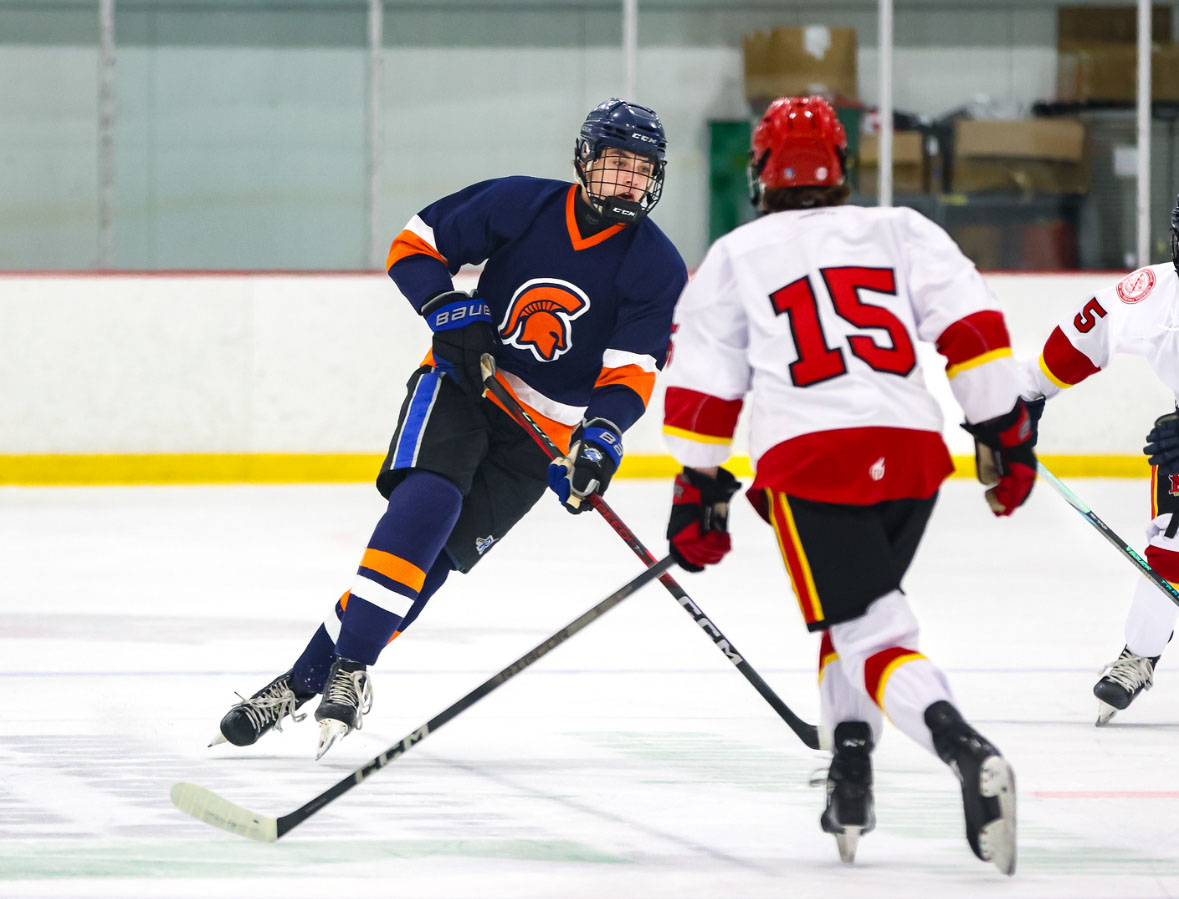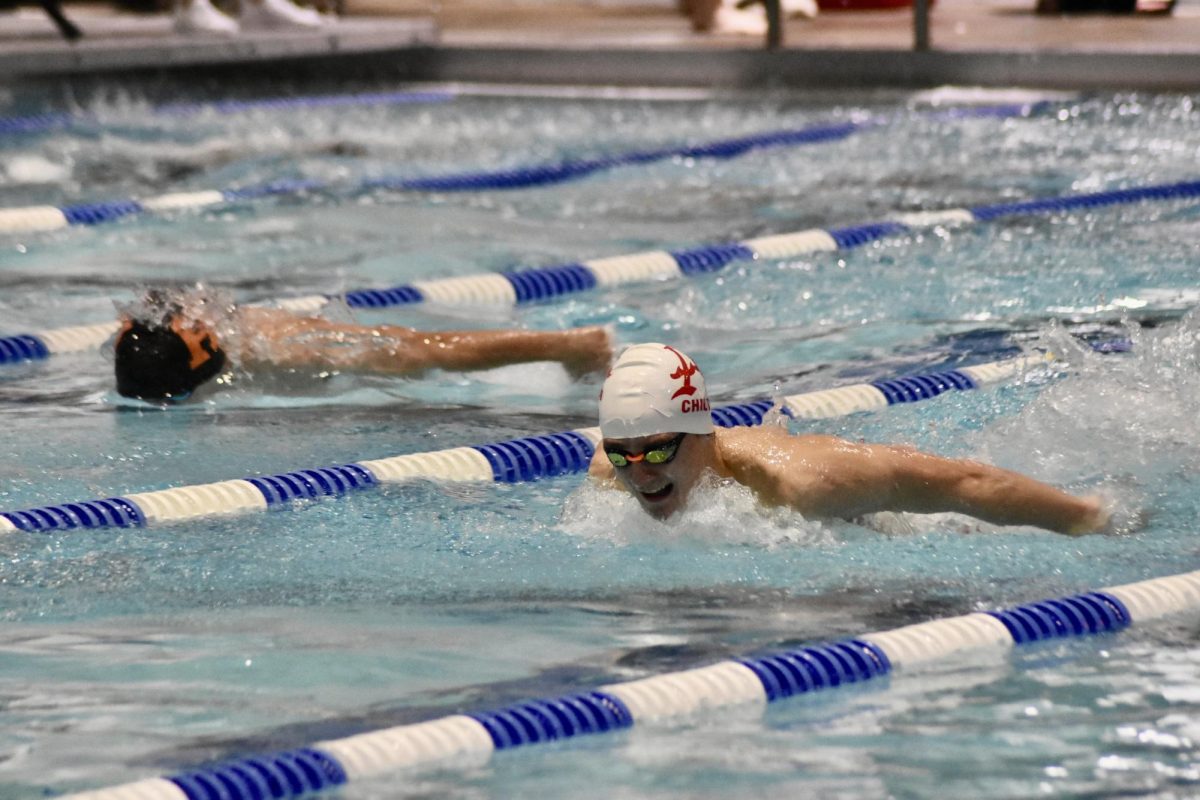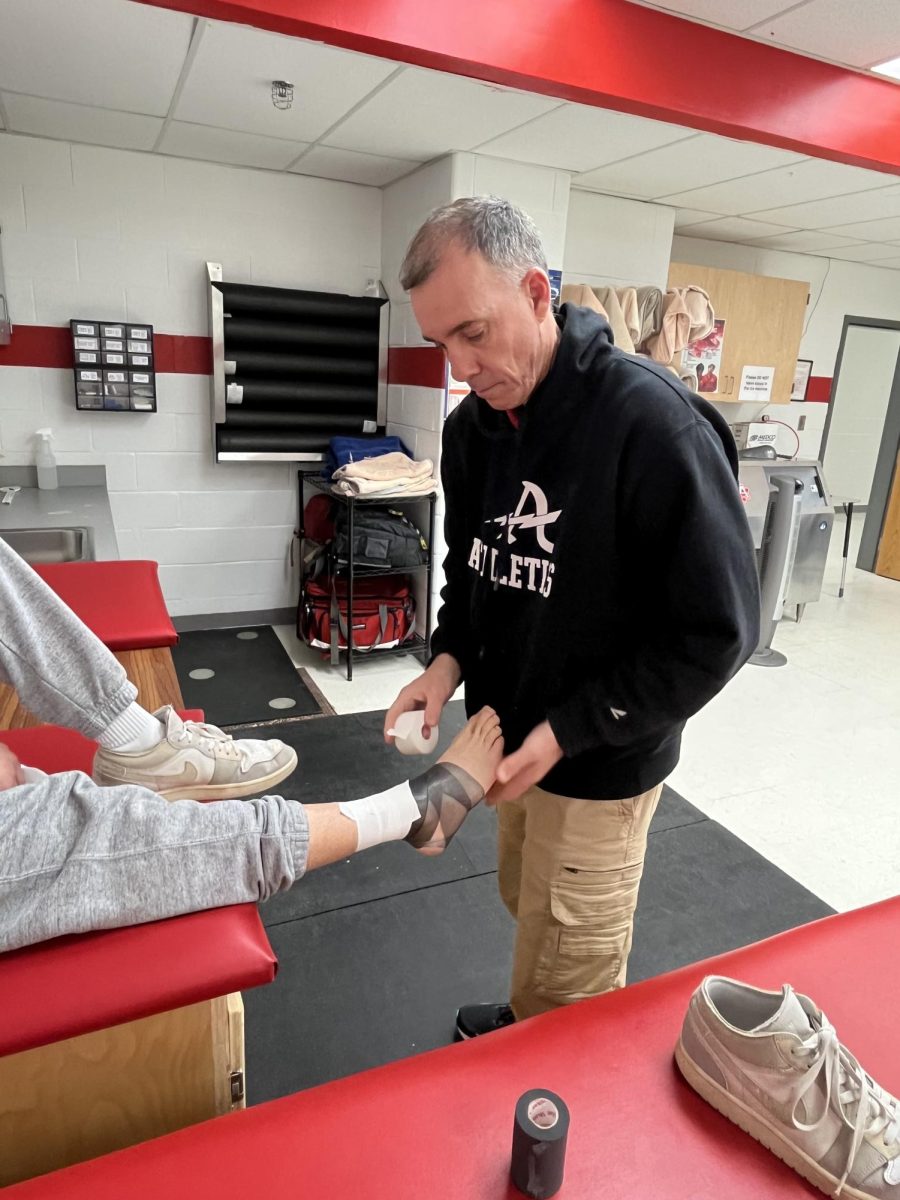This holiday season, middle-aged women aren’t the only ones watching their weight. The AHS wrestling team must monitor the scales as well for the winter sports season.
“You know what really helps when trying to cut weight? Your mom bringing home Oreo brownies… thanks mom,” Senior Tyler Jackson recently posted as his Facebook status.
Jackson’s frustration stems from having to drop pounds in order to fit into a more advantageous weight class. The athletes, who are weighed in before every meet to be matched fairly with opponents, constantly endeavor to be at the heavier end of a lighter weight class, rather than at the lower end of a higher weight class.
“[As a way to cut weight], what I like to do is to chew gum. [This way] I have some taste of flavor [in my mouth] so I am not tempted to eat a lot after working out. I also run,” varsity sophomore David Vo said.
Whether in the 103-pounds-and-below Featherweight class, or the 215-pounds-and-above Heavyweight class, hydration plays a key role in wrestlers’ weights. The hydration test conducted before every wrestling season by the AHS athletic trainers measures how hydrated an athlete’s body is and, when calculated with weight and body fat, shows how much weight an athlete is able to lose per week.
“Losing weight too fast is very bad and unhealthy,” Vo said, “[I can possibly lose about 3.6 pounds per week.”
The W-1 form expertly monitors the weight of these athletes state-wide. The Virginia High School League (VHSL) Wrestling Weight Control Program, begun in 1989 and officially organized by 2002, issues the weight certification forms, which are a requirement for all participating wrestlers before every meet.
“Hydrate [doesn’t mean drinking] soda or Red Bull. Get hydrated on water, milk, Gatorade, Powerade, or 100 percent fruit juice,” Vo said.
Vo’s knowledge coincides greatly with the Hydration Tip Handout found on the VHSL Wrestling Weight Control Program’s website, a form that, ironically, encourages pushing fluids to flush waste out of the body before wrestlers register their scratch, or competition, weights.
Wrestlers consume copious amounts of whole grains (bread, pasta, and granola) and protein (sources include chicken, fish, and beef) prior to meets. The focus on nutrition, largely composed of avoiding alluring sodas and chips, is not the sole concern of wrestlers.
“Once you start working out, maintain a regular schedule for wrestling- once your weight goes down, it’s really easy to cut weight because your body is used to the exercise and you can begin to gain muscle,” Vo said.
Junior Andy Stratton, who competes at the varsity level, said he got in shape for wrestling by doing sprints, bleachers, and log rolls. Stratton also did summer wrestling to condition for this year’s football and wrestling seasons.
The first meet of the wrestling season took place at Forest Park High on December third. Annandale lost 15 to 60.
Freshman Dominic Maier, who is a member of the JV team, won his match. “You win by pin, which means I kept his shoulders on the ground for more than two seconds,” Maier said.
After practicing from 2 p.m. to 6:30 pm for six days a week, the only relaxation wrestlers get comes from sitting in the bleachers at a two hour meet until their name and weight class are called to compete.









